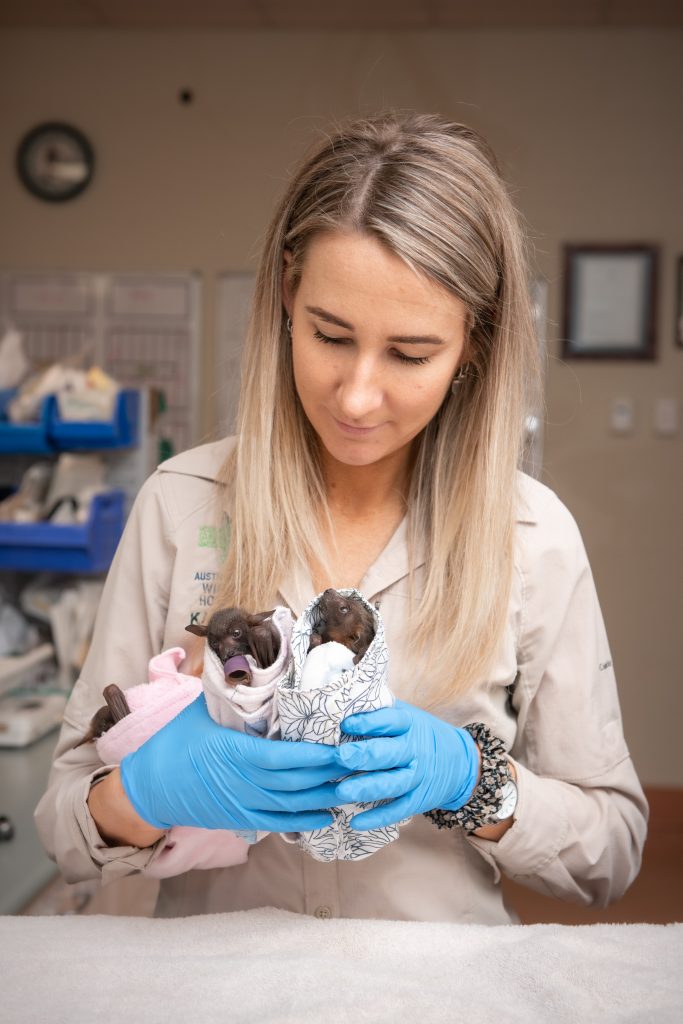The Australia Zoo Wildlife Hospital is preparing for ‘trauma season’, having recently treated an influx of little red flying foxes that arrived from a local bat camp.
Wildlife Warriors, treated 15 baby flying foxes after their mothers fled the camp due to human disruptions, leaving their younger ones alone and vulnerable.
Australia Zoo Wildlife Hospital’s Dr Ludovica Valenza said the older generation of little red flying foxes abandoned their babies who were too young to be left alone, after their roosting site was disturbed by humans.
“Sadly, there is an ongoing conflict between bats and human beings whereby bats are perceived as dangerous.
“For this reason, these animals are often scared by loud noises, smoke and occasionally inhumane methods that displace them from their habitat,” Dr. Valenza said.
“Such methods are shown to be ineffective as bats will simply fly to other areas to roost, some of these locations often being parks or recreational zones,” she said.
After being examined by the wildlife hospital’s specialised veterinarians, some flying foxes had traumatic injuries from being preyed upon by raptors or as a result of cutting down trees.

Others were diagnosed with pneumonia, requiring fluids and plenty of rest to regain their strength.
Due to the severity of their wounds and illnesses, a number of flying foxes were humanely euthanised, with the remaining to stay with dedicated wildlife carers until they are old enough to be released back into the wild.
Bats are important for conservation as they are pollinators of native trees and shrubs that keep the forests lush, also giving other native animals a home to live in.
Little red flying foxes can travel for up to 30 kilometres to find nectar on native trees, and are also the first species of flying foxes to give birth in the season.
Founder of Australia Zoo Wildlife Warriors, Terri Irwin said without receiving lifesaving treatment and care from the team at the Australia Zoo Wildlife Hospital and the dedicated carers, these precious animals would have been left vulnerable in the wild with many threats surrounding them.
With the arrival of trauma season, it is time and again the most confronting time for the wildlife hospital as the number of patient admissions triple.
To support their efforts in treating patients just like these gorgeous little red flying foxes, please visit wildlifewarriors.org to donate.